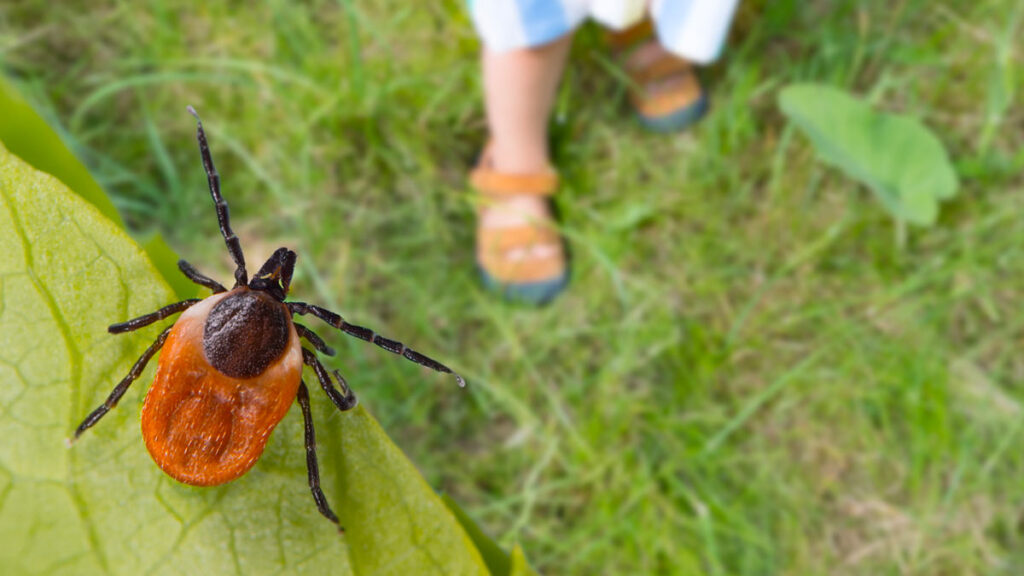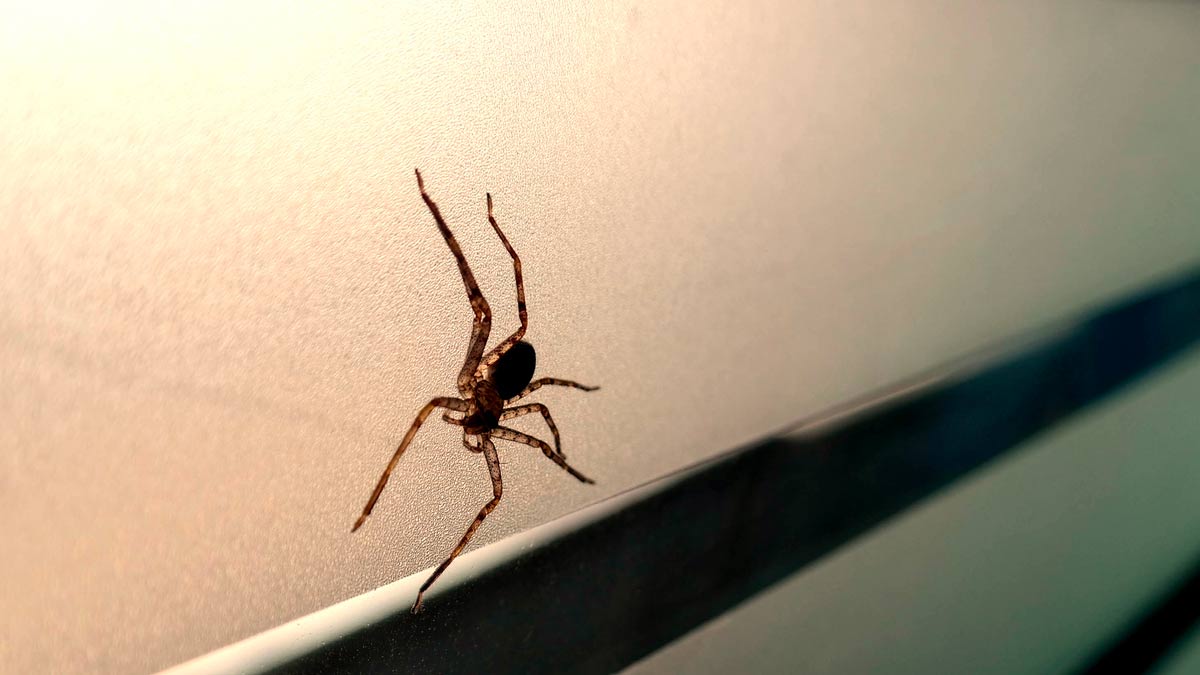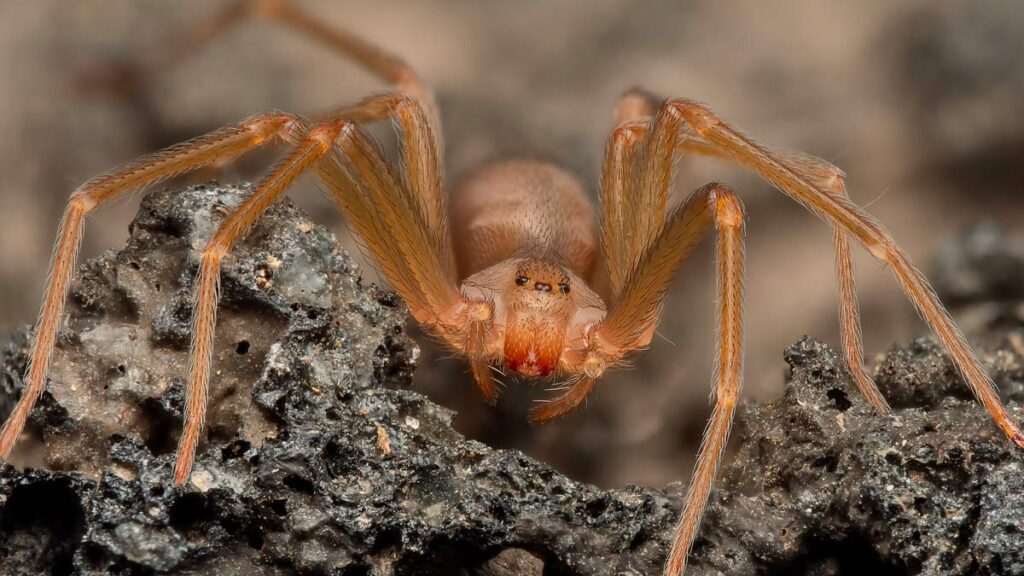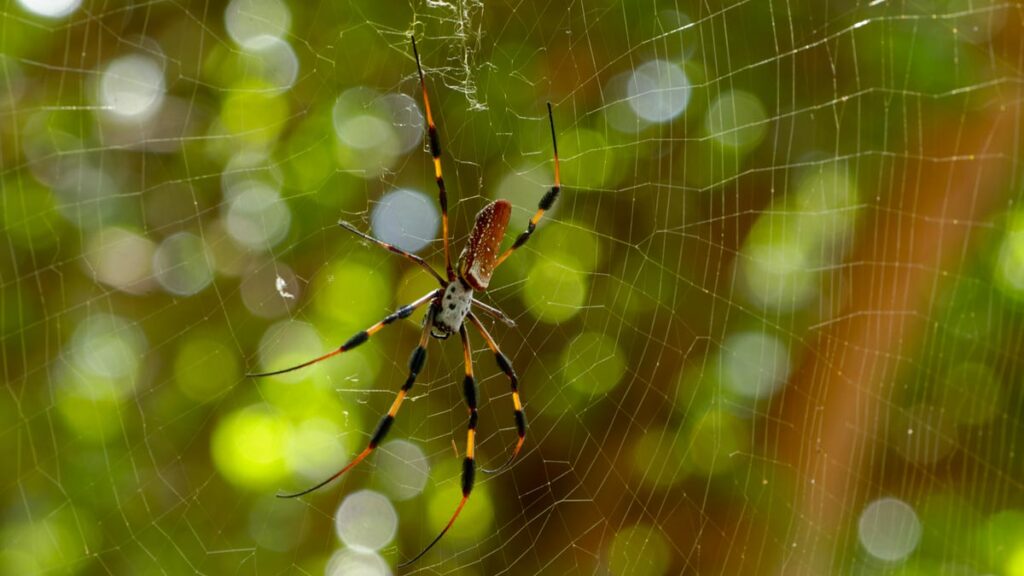
Brown Widow Spiders in Florida
Risks, Identification, and Safety Measures
Updated on: January 2024

Florida, with its iconic beaches, lush landscapes, and diverse ecosystems, is a haven for many species. However, in recent years, the state has witnessed an unwelcome rise in the population of a particular arachnid: the brown widow spider. Originally hailing from South America, these spiders have comfortably adapted to Florida’s balmy, humid environment, making them more prevalent in both urban and rural settings. While the black widow spider might be more infamous due to its dangerous reputation, the emergence and growing presence of the brown widow necessitates attention. Their increasing numbers not only influence the natural balance but also raise concerns about human-spider interactions, particularly in domestic settings.
This article aims to delve into the brown widow’s significance in Florida and why it’s crucial for residents and visitors alike to be informed. An understanding of their behavior, risks, and preventative measures can ensure safer coexistence and mitigate potential threats, making this information indispensable for the broader community.
Find What You Need
Identifying the Brown Widow Spider
The Brown Widow Spider, scientifically referred to as Latrodectus geometricus, is a species that’s become increasingly prevalent in Florida. Originally from South America, they have comfortably transitioned into Florida’s subtropical climates. These spiders predominantly reside in urban areas, favoring locations like the undersides of benches, the insides of empty plant pots, and crevices within structures. For those seeking visual references, “SpiderSavvy’s Habitat Guidebook” (priced at $14.99) provides detailed illustrations and descriptions of preferred spider locales.
Distinguishing Features Compared to Other Florida Spiders
Brown widows, despite their generic appearance, possess unique traits that set them apart from other Floridian spiders. Their shades vary from a light tan to a deep brown, occasionally appearing almost black. The subtle orange or yellow hourglass design on their abdomen’s underside is a defining characteristic, though it’s less pronounced than the marking on their cousin, the Black Widow. A notable feature exclusive to Brown Widows is their spiky egg sacs, which sharply contrast with the smooth egg sacs of many other spiders.
For those interested in hands-on identification, “ArachnidMaster’s Exploration Kit,” retailing for $53.99, offers a magnifying lens, safe-handling tweezers, and a comprehensive spider guide. Furthermore, for digital enthusiasts, the “IdentifySpiders Pro App” ($3.49 in app stores) allows users to snap pictures and cross-reference them with an extensive spider database, ensuring accurate identifications.
The Takeaway
Despite the Brown Widow spider’s increasing population in Florida, with community awareness and proactive measures, the reported incidents of bites can be significantly reduced, emphasizing the importance of education in the face of a 20% rise in spider sightings over the past decade.
Understanding the Risks
Symptoms of a Brown Widow Bite
Initial symptoms post-bite can be mild, sometimes going unnoticed. However, as time progresses, the affected area may become red, swollen, and painful. Some victims report experiencing systemic effects like fever, chills, nausea, muscle pain, and, in rare instances, localized skin necrosis. It’s also not uncommon for bite victims to feel fatigued or to have difficulty in breathing.
Timeline for Seeking Medical Attention Post-Bite
Upon suspecting or confirming a bite from a Brown Widow spider, immediate action can make all the difference.
Wash – Begin by washing the affected area gently with soap and water to prevent potential infection.
Apply a Cold Compress – An ice pack wrapped in a cloth applied to the bite area reduces swelling and alleviates pain, ensuring that it’s not applied directly to the skin to avoid frostbite.
Don’t Scratch – It’s imperative to avoid scratching the area, as this can exacerbate the reaction and heighten the risk of infection.
While you might initially experience mild or even barely noticeable symptoms, these can escalate. Given the unpredictable nature of individual reactions to spider venom, it’s recommended to consult with a healthcare professional or head to the nearest emergency room within the first 3 hours following a bite. In the interim, keep the affected limb, if applicable, elevated. This reduces the spread of venom through faster blood circulation.
For added preparedness, consider keeping an emergency kit on hand, especially if you reside in an area known for Brown Widow activity. The kit should include antiseptic wipes, clean bandages, a cold pack, and over-the-counter pain relief medication. Always consult with a medical professional before taking any medication. While these measures can offer temporary relief, they’re no substitute for professional medical evaluation and care, which is paramount in the event of a bite.
First Aid Steps Post-Bite
In the unfortunate event of a spider bite, immediate action can make all the difference. Carrying a compact first aid kit tailored to bites and stings, like the “Bite & Sting First Aid Kit” by MyMedic ($9.95), can be immensely helpful. This kit not only offers tools for symptom relief but also provides step-by-step instructions on managing the situation until professional medical help can be sought.
Long-Term Bite Consequences
In most cases, with timely treatment, individuals experience a complete recovery with minimal to no long-term effects. However, if untreated or in cases of severe allergic reactions, complications such as persistent pain, scarring, or even neurological symptoms can develop.
Populations at Elevated Risk: Children and Elderly
Certain populations, particularly the very young and the elderly, are at a heightened risk of experiencing severe symptoms from a Brown Widow bite. Children’s smaller body size means venom can have a more concentrated effect, while the elderly might have compromised immune systems or other health conditions that exacerbate the venom’s impact. Both groups should exercise extreme caution in areas known for Brown Widow activity and seek immediate medical attention if bitten.
Brown Widow vs. Black Widow: A Comparative Analysis
Venom Potency Comparison
The Brown Widow Spider, while venomous, doesn’t quite match the venom potency of its more renowned relative, the Black Widow. To break it down further:
Concentration and Quantity
Both the Brown and Black Widow spiders produce a neurotoxic venom called “latrotoxin.” While the chemical composition of the venom in both species is similarly potent, the Brown Widow typically injects less venom per bite than the Black Widow. This reduced quantity often results in milder symptoms in bite victims.
Clinical Observations
Over the years, bite incidents have shown that while a Brown Widow bite can cause localized pain, swelling, and other systemic symptoms, it is less likely to result in severe complications compared to a bite from a Black Widow. This is mainly due to the Black Widow’s ability to deliver a larger venom dose.
Comparison with Other Florida Spiders
When juxtaposed with other spiders commonly found in Florida, like the Wolf Spider or the Orb Weaver, the venom potency of the Brown Widow is notably higher. However, it’s essential to note that fatalities from Brown Widow bites are infrequent, especially when immediate medical attention is sought. On the other hand, while bites from spiders like the Wolf Spider can be painful, they lack the neurotoxic venom that makes Widow spiders a more significant concern.
Risk Comparison in Florida
Florida’s vast landscapes, both rural and urban, house a myriad of spider species. Among them, the Brown Widow and Black Widow have garnered considerable attention due to their venomous nature and the potential risks they pose to residents.
Population Density and Habitat
The Brown Widow spider has witnessed a significant increase in its population in recent years, particularly in urban settings. Common places to find them include garages, mailboxes, and beneath furniture. On the other hand, Black Widows, despite being more venomous, aren’t as prevalent in urban areas. They gravitate towards secluded spots, such as wood piles and untouched storage spaces.
Bite Frequency
Recent data suggests that reported bites from Brown Widows in Florida have overtaken those from Black Widows. This uptick is likely due to the Brown Widow’s escalating population and their more expansive presence in areas inhabited by humans.
Medical Treatment and Costs
Seeking medical attention is imperative when bitten by either of these spiders. While there are first aid kits available that can provide immediate relief for spider bites, they are not a replacement for formal medical treatment. The medical costs associated with treating a Brown Widow bite, generally less severe in nature, can range between $500 to $1,200. Treatment for a Black Widow bite, which can be more severe, might escalate up to $3,000, especially if there’s a need for antivenom.
In conclusion, while the venom of the Black Widow is indisputably more potent, the rising population and bite occurrences linked to the Brown Widow present an equivalent concern for the residents of Florida.
The Environmental Factors
Habitats and Environments Conducive for the Spiders
Both the Brown and Black Widow spiders thrive in warm, subtropical climates, making Florida an ideal habitat. The Brown Widow specifically has adapted well to urbanized environments. They often shelter in man-made structures, such as mailboxes, patio furniture, window ledges, and other undisturbed spots. Conversely, Black Widows prefer more natural, undisturbed habitats. They often find solace in woodpiles, sheds, and in the dense underbrush, away from human activity.
Active Seasons and Months for Brown Widow Spiders
While these spiders can be active year-round in Florida due to its warm climate, they are especially prevalent during the warmer months of May through September. This is their prime breeding season, leading to heightened activity. Additionally, during these months, Floridians are more likely to encounter them, as humans also increase their outdoor activities.
Population Comparison with Other States or Regions
In terms of population density, Florida stands out for the Brown Widow, particularly in its southern regions. According to the “American Arachnid Census,” California and parts of the Gulf Coast states also report notable populations, though not as dense as Florida. The Black Widow, on the other hand, has a broader North American range, being found as far north as Canada and as far south as Florida. However, Florida’s unique climate and urban sprawl provide an especially hospitable environment for the Brown Widow.
Impact of Climate Change on Their Population
Climate change has undeniably impacted the global distributions of numerous species, and spiders are no exception. A study by the University of Florida’s Entomology Department observed that the rising temperatures and fewer cold snaps in Florida have created a more hospitable environment for the Brown Widow spider. As temperatures have risen, these spiders have expanded their range further north within the state and increased in numbers.
A different study noted that warmer conditions extend the Brown Widow’s active and breeding seasons. This elongation allows for more reproduction cycles annually, potentially accelerating population growth rates. The prolonged warm periods also mean that juvenile spiders have a higher chance of survival, leading to denser populations.
In light of the current trajectory of global warming, we can expect the behaviors and distributions of these spiders to continue evolving. As these changes can have cascading effects on local ecosystems, the need for continued research and observation remains paramount.
Florida’s Ecosystem and the Brown Widow
The emergence of the Brown Widow in Florida has created a series of ecological ripples. While not originally native to the state, the spider has managed to adapt and establish itself within Florida’s diverse ecosystems. This adaptation has led to competition with native spiders and other arthropods, particularly in the race for food. As a consequence, there have been observable shifts in certain insect populations, as the Brown Widow often preys on smaller insects, possibly influencing the abundance and distribution of these prey species in localized areas.
Furthermore, the Brown Widow, being an invasive species, might affect the reproductive success of some native spiders by competing for prime web locations or by directly preying on younger spiders. Such interactions can disrupt the balance within the ecosystem, leading to unforeseen consequences in the long run.
Natural Predators and Population Control
The Brown Widow, though venomous, doesn’t escape the natural food chain. Several creatures actively prey on this spider, helping to keep its population in check. Birds like the Loggerhead Shrike are among the spider’s most effective predators. Additionally, larger spiders, certain centipede species, and specific wasp species, like the mud dauber wasp, have been documented preying on Brown Widows.
The mud dauber wasp, in particular, has a rather unique relationship with the Brown Widow. The wasp paralyzes the spider and lays its eggs on it, providing a live meal for the wasp larvae once they hatch. This natural behavior is a potent check on the Brown Widow’s population.
Additionally, the varied lizard population in Florida, such as the Anole lizard, can also act as predators, particularly on younger or smaller Brown Widows. These natural checks and balances are crucial for maintaining the equilibrium of Florida’s vibrant ecosystems.
Home Safety and Prevention
Homeowner Precautions for Infestation Prevention
Creating a home environment that’s unwelcoming to spiders is the first line of defense against infestations.
Seal Entrances – Ensure that doors and windows are sealed properly. Utilize weather stripping or caulk for gaps. Brands like Duck Max Strength Silicone Weatherstrip Seal ($7.99) are popular choices.
Clear Debris – Regularly remove any clutter or debris from your home and yard. This includes old boxes, piles of wood, or unused furniture that can provide hiding spots.
Light Management – Using yellow or sodium vapor light bulbs for outdoor lighting can reduce the attraction of many insects, thereby lowering spider food sources. A popular brand is Philips Bug-A-Way Yellow Bulb ($9.99).
Safe Home and Garden Inspection Methods
Regularly monitoring your living spaces can catch a problem early, but it’s essential to do so in a way that doesn’t expose you to unnecessary risks.
Wear Protective Gloves – When moving items or inspecting dark corners, always wear gloves. Ansell HyFlex Gloves ($19.99) are a durable choice.
Use Flashlights – Inspect darker areas with flashlights to ensure visibility. Maglite LED Flashlight ($29.99) provides a powerful beam.
Avoid Direct Handling – Never handle spiders or webs directly. Use tools like long sticks or broom handles to probe areas safely.
Effective Repellents
While preventative measures are crucial, sometimes you need direct solutions to repel spiders that have already taken up residence such as:
Essential Oils – Oils such as peppermint and lemon can act as spider repellents. Young Living Essential Oils offers high-quality options ranging from $20-$30 per bottle.
Commercial Repellents – Products like TERRO Spider & Ant Killer ($8.49) are designed to repel spiders from entering.
Insecticide Effectiveness
When dealing with persistent or widespread infestations, knowing which insecticides work best can be a lifesaver.
Residual Sprays – Products like Ortho Home Defense Max ($16.99) can keep spiders at bay for up to 12 months.
Foggers – Foggers can treat larger infestations. Hot Shot No-Mess Fogger ($9.97) is a common choice, but remember it requires vacating the space for a few hours.
Natural Alternatives to Chemical Insecticides
Diatomaceous Earth – This natural substance damages the exoskeleton of spiders, leading to dehydration. Harris Diatomaceous Earth ($14.99) is a recommended brand.
Lemon Eucalyptus Oil – Known to repel spiders, it can be mixed with water and sprayed in areas of concern.
Vinegar Solution – A 50/50 mix of white vinegar and water can be sprayed in affected areas as spiders detest its acidity.
Chestnut, Walnut, & Cucumber – Placing slices or shells of these in corners of your home can deter spiders, as they dislike the smell.
Herb Planting – Lavender, mint, and rosemary plants around the home can act as a natural spider repellent.
With these methods in place, homeowners can create a safer environment, minimizing the risks associated with spider infestations, and particularly from venomous ones like the Brown Widow.
Recent Trends and Public Awareness
Over the past decade, there has been an increasing presence of the Brown Widow spider in Florida, capturing the attention of both the public and entomologists. A significant outbreak was documented in 2018 in the Tampa Bay area, where homeowners reported a dramatic rise in sightings, especially in urban settings. Another noticeable surge occurred in the Miami-Dade County in 2020, leading to widespread media coverage. These population spikes can be attributed to a combination of favorable weather conditions, increased food sources, and fewer natural predators.
Public Education Measures by Local Health Departments
Recognizing the potential hazards and the public’s concerns, Florida’s health departments have intensified their efforts to educate the public:
Informational Campaigns
Local health departments, in collaboration with community centers, have launched informational campaigns. These include brochures, posters, and online resources detailing the characteristics, habitats, and risks associated with the Brown Widow spider.
Workshops
Several counties have begun organizing workshops. Here, experts offer insights into the spider’s behavior, safety precautions, and first-aid measures in case of bites.
School Programs
Recognizing the importance of educating the younger generation, school districts have integrated modules about the Brown Widow into their science curricula. Students are taught to identify, avoid, and safely handle potential encounters.
Public Service Announcements
Partnering with local TV and radio stations, health departments regularly broadcast public service announcements. These segments aim to inform the public about current spider population trends, risks, and preventive measures.
Collaboration with Pest Control Services
To tackle infestations, local health departments have collaborated with certified pest control services, offering discounted rates for spider control in hotspot regions.
Through these public education measures, Florida’s health departments aim to reduce the risk and fear associated with the Brown Widow, arming residents with the knowledge they need to coexist safely with these spiders.
Safety Measures and Recommendations: A Comprehensive Guide for Navigating Spider-Related Risks
Parental Advice for Children
Keeping children safe begins with education. Parents should not only teach their kids about the potential dangers of Brown Widow spiders but also provide them with practical tips to avoid unwanted encounters. Investing in books that educate your child on the presence and danger like can be a useful starting point to introduce youngsters to native threats in a child-friendly manner.
Tips for Travelers and Tourists in Florida
For visitors eager to explore Florida’s diverse natural landscapes, being aware of local wildlife threats is paramount. Purchasing local guidebooks, such as “The Traveler’s Guide to Florida Wildlife” by P. Kenner ($18.99), can offer insights into what to expect and how to stay safe. Additionally, considering accommodations that offer insect-proofed rooms or tents, especially in more natural settings, can further reduce the risk.
Conclusion
In the complex tapestry of Florida’s ecosystem, the Brown Widow spider plays but a small, albeit significant, part. Yet, understanding and respecting this creature is pivotal to ensuring the safety and well-being of both residents and visitors. Awareness is the first and most crucial step towards prevention. By recognizing the spider, its habitats, and its behaviors, individuals can take proactive measures to minimize encounters. Safety, however, is a communal effort. From parents educating their children to travelers sharing insights, every member of the community has a role to play. Lastly, community collaboration—whether in the form of educational seminars, neighborhood inspections, or community-led cleanup drives—can help reduce the risks posed by the Brown Widow. Together, with knowledge and collective action, Florida’s communities can coexist safely alongside its diverse wildlife.





